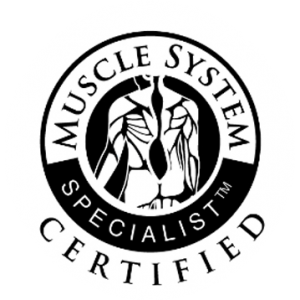Hurt. Ouch. Pain.
 These three words are often used to describe a feeling or sensation that we don’t like somewhere in our body.
These three words are often used to describe a feeling or sensation that we don’t like somewhere in our body.
We often add some more detail to our misery with words like sharp, dull, achy, and burning.
What is pain and these related sensations we don’t like? It is simply all the information available – or missing – in the body where a conclusion is drawn that something is wrong.
It is easy to understand when we have just had a hammer drop on our toes, or when we bang an elbow into the corner of the wall. That hurts. We expect it to hurt and understand why it hurts because we just damaged some tissues of the body and our nerves tell us so.
We expect the pain to last a while and then as the body heals up the pain should go away. And it often does just that. The conundrum is when we have pain, ouch, and hurt and no one can seem to explain the cause. The situation gets dire when we go to the doctor, have tests done, see the physical therapist, acupuncturist, pain management physician and the massage therapist for relief and the feeling persists. We try the pain medications and maybe get a shot of something in the spot where it hurts and yet still… pain. No one seems to be able to explain it. Maybe it is given some vague, catchall name that ends in “–itis”. Then at least we can blame it on something. But blame doesn’t solve the problem, does it?
You see Pain isn’t a thing. It’s not a physical object that you can touch and look at under a microscope – or any scope for that matter. Pain is an incredibly complicated phenomenon. It can be short term, long term, or intermittent. Pain can be present when there is observable tissue damage (a torn muscle, ligament, or tendon). Sometimes you can have tissue damage and experience no pain. Really weird.
Pain doesn’t seem to play fair either. Two people can perform the same exact task and only one gets hurt. Of those that do get hurt, their pain may not only vary in intensity, it may vary in location and duration as well. Sometimes pain can be felt in places that don’t even exist – like phantom limb pain (when a person feels pain in a body part that has been removed). Now that’s really weird!
So what gives? Surely, there are times when tissue damage needs to repair itself and pain keeps us from reinjuring the area by altering the way we move. As well, the psychological component of each individual can affect the perception of bodily sensations as the way each of us thinks about pain can dramatically influence the conclusion of pain. But that is the key! Pain is simply a conclusion of the body based on the quality of all of the information it has – or is missing. If this is true, then Pain is an information management issue. Persistent pain that can’t be explained easily, or have specific blame assigned, and is associated with bodily movement or position maintenance (like standing or lying down) may be resolved by changing the quality of information flow and control within the body!
So how can we change the information flow within the body?
Exercise. Specifically targeted exercise to those parts of the body’s control system that seem to have lost some of that control. Improved control of the body may equal improved information management via the restoration, and removal of, information.
 There is a professional dedicated to exploring this option: The Certified Muscle System SpecialistTM (CMSS)
There is a professional dedicated to exploring this option: The Certified Muscle System SpecialistTM (CMSS)
The CMSS is an Exercise Professional with specific education and training that leverages the relationship between the qualities of your muscle system – how you move and control yourself – and how you feel. Movement and position maintenance require lots of information. As your muscles are the ONLY thing that can move you and hold you in positions like standing, swing a golf club or walking stairs, then it makes some sense to assess your muscles’ ability to create and sustain movement and position control.
The CMSS uses a unique thinking process and technical skill set to identify the specific bodily positions and movements that have diminished quality. Once those positions and movements have been identified, the goal is to restore that quality.
The hard part is found in the reality that there are hundreds of muscles and an infinite number of ways to move and to hold positions. But that’s where the CMSS comes in. The CMSS acts very much like a forensic investigator and field scientist. By conducting a thorough interview and then taking specific samples of your body’s control system, the CMSS can start targeting the areas where your muscle control has lower quality — poor information management — and initiate a systematic and progressive process of targeted exercise. These exercises work to improve the information flow – via your muscle control – which may lead to the body concluding no more pain, ouch, or hurt.
Written by Jay Weitzner and Greg Mack. Originally published on Symmetry Muscle Health. Reprinted with permission.
Jay Weitzner, MS is a Certified Medical Exercise Specialist through the American Academy on Exercise (ACE); he holds a Bachelor’s and a Master’s in Exercise Science/Human Performance with an emphasis on exercise physiology. Jay specializes in working with clients with musculoskeletal issues — his clients have problems or concerns about their quality of movement and their physical health.
Greg Mack is a gold-certified ACE Medical Exercise Specialist and an ACE Certified Personal Trainer. He is the founder and CEO of the corporation Fitness Opportunities. Inc. dba as Physicians Fitness and Exercise Professional Education. He is also a founding partner in the Muscle System Consortia. Greg has operated out of chiropractic clinics, outpatient physical therapy clinics, a community hospital, large gyms, and health clubs, as well operating private studios. His experience in working in such diverse venues enhanced his awareness of the wide gulf that exists between the medical community and fitness facilities, particularly for those individuals trying to recover from, and manage, a diagnosed disease.
